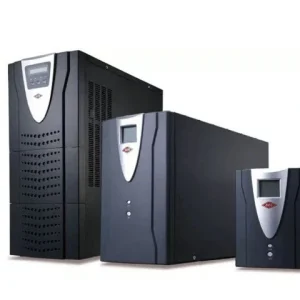 Uninterruptible Power Supplies (UPS)
Uninterruptible Power Supplies (UPS)
Uninterruptible Power Supplies (UPS) are electrical devices that provide emergency backup power to a load when the main power source fails or fluctuates. It’s a critical component in power systems where even short outages can cause data loss, equipment damage, or operational disruption.
Why Use a UPS?
A UPS ensures:
-
Continuous power to critical equipment during outages
-
Protection from power quality issues (spikes, sags, surges, harmonics)
-
Time to safely shut down systems
-
No interruption in power-sensitive operations (e.g., hospitals, data centers)
Main Functions of Uninterruptible Power Supplies
-
Power Backup: Supplies stored energy during outages (via batteries or flywheels)
-
Voltage Regulation: Corrects under/over-voltage conditions
-
Surge Protection: Shields equipment from power spikes or lightning strikes
-
Power Conditioning: Filters noise and harmonics
Common Types of UPS Systems
| UPS Type | Description | Use Case |
|---|---|---|
| Offline / Standby | Switches to battery power when a failure is detected (few milliseconds delay) | Small offices, home PCs |
| Line-Interactive | Regulates voltage with an autotransformer; battery backup for outages | Retail, small servers |
| Online / Double Conversion | Converts AC to DC and back to AC continuously (no transfer time) | Data centers, hospitals, industrial control systems |
| Delta Conversion | Advanced version of double conversion with higher efficiency | High-performance industrial and IT systems |
| Rotary UPS | Uses flywheels or generators for mechanical energy storage | Large facilities, mission-critical systems |
Key Components of a UPS
-
Rectifier/Charger: Converts AC to DC and charges the battery
-
Battery Bank: Stores energy (typically lead-acid or lithium-ion)
-
Inverter: Converts stored DC back to clean AC for the load
-
Bypass Switch: Allows power to bypass the UPS for maintenance or overloads
-
Control System: Monitors performance, alarms, and diagnostics
Common UPS Applications
-
Data Centers
-
Hospitals and medical equipment
-
Telecommunications
-
Banking and ATMs
-
Industrial automation and SCADA systems
-
Security and fire systems
-
Emergency lighting
UPS Maintenance and Monitoring
-
Regular battery checks (voltage, impedance)
-
Environmental controls (temperature, humidity)
-
Firmware/software updates
-
Remote monitoring systems
-
Annual preventive maintenance (PM)

